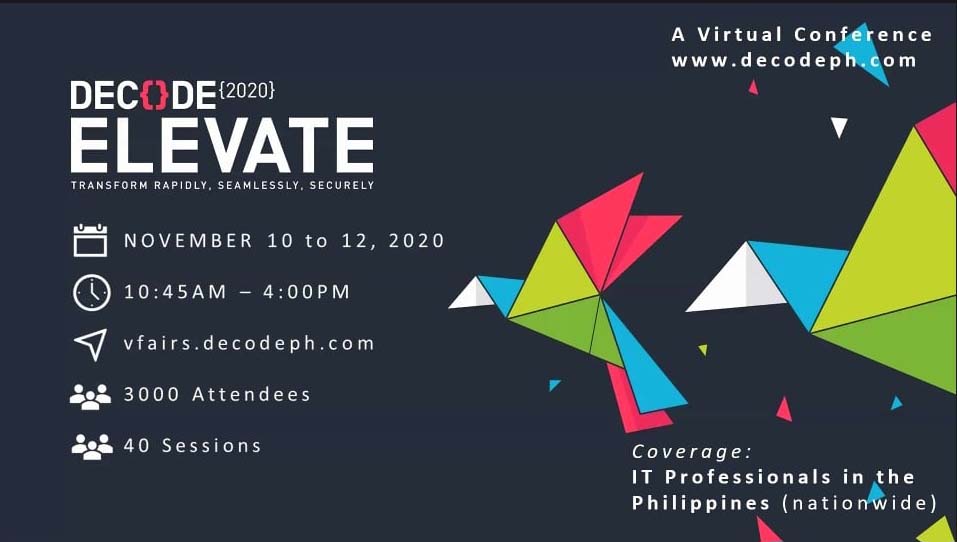
This pandemic forced a lot of people to go online through work from home arrangements and online classes for students. Since facility at home are not the same as in the office, this left a lot us vulnerable to cybersecurity threats.
Here are some of the common cybersecurity threats and what we should do to avoid them.
Zoombombing
What is Zoombombing?
Zoombombing involves outsiders entering private meetings and performing disruptive acts such as sending obscene materials and malwares to the attendees.
Most parents restrict their kid’s use of the internet for fear of cybersecurity threats but the pandemic has left us no choice but to let our kids use the internet for their online classes. Zoom is one of the most common videoconferencing apps used by schools for online classes. However, there were cases of unauthorized persons entering the online classes doing obscene acts. This can be very traumatic for young students.
How to prevent Zoombombing?
School IT administrators and teachers should always see to it that only legitimate students can enter the online classes. There should always be passwords and students and parents should be made aware that these are not to be shared with other persons. Users should only download apps and installers at official websites to avoid malware injections.
Covid-19-Themed Attacks
What are Covid-19-themed attacks?
Covid-19-Themed Attacks are threats consisting of emails, URLs, and malicious files that reference the pandemic. This is exploiting the need of people to get more information about Covid-19. Trend Micro Smart Protection Network (SPN) reported that from January to June 2020, they have detected nearly 9 million Covid-19-related threats.
How to prevent Covid-19-themed attack?
To avoid having to unknowingly download malicious apps, make sure to get information on Covid-19 from reputable sources such as the World Health Organization.
Phishing/Social Engineering Attacks
What’s a Phishing attack?
A Phishing attack is a form of social engineering attack where the attacker generates a fraudulent email, text or website to trick the victim in providing their sensitive information such as login details and password for online accounts, credit card information, etc.
How to prevent Phishing Attack?
Users should make sure that they are providing information to legitimate websites. Credit card companies and banks will never ask you to provide your password to them. The usual tell-tale signs of phishing emails are the wrong spellings and grammar.
Ransomware
What is a Ransomware attack?
Ransomware attacks generally involve the attacker infecting a victim’s systems with a piece of malware that encrypts all of their data. The victim is then threatened and given an ultimatum to pay the ransom or lose their data. According to Trend Micro, the top five targeted industries of Ransomwares during the first half of 2020 are government, healthcare, manufacturing, financial, and education.
How to prevent Ransomware attacks?
Organizations should have strategies in place in dealing with Ransomware attacks. There should be a strong security system in place such as firewalls and antivirus programs. Having a business continuity and recovery plan is also important so that if ever the system is infected, data can be restored from a backup.
IoT-Based Attacks
What is IoT-based attack?
Due to increasing demand, more internet-connected “smart” devices are released for use in homes and businesses, which also led to more vulnerabilities. IoT is now used in manufacturing, agriculture, healthcare, etc. A cybercriminal who can hack into your smart devices can wreak havoc to businesses.
How to prevent IoT-based attacks?
One way to prevent IoT-based attacks is to keep the firmware of these devices up-to-date. Manufacturers usually release patches that can prevent exploitation of vulnerabilities in their system. Keep an inventory of your smart devices and make sure to check for firmware updates.
The need for effective cybersecurity became an especially important issue as more people work from home.
Learn about cybersecurity in this digital age as the country’s premier cybersecurity event goes virtual.
DECODE 2020 will be on November 10-12 with the theme “ELEVATE! Transform Rapidly, Seamlessly, Securely.” Tracks about Artificial Intelligence, Machine Learning, Data Protection and Privacy, and more will be presented by renowned industry experts from around the world.
DECODE 2020 is an annual conference organized by Trend Micro Inc, a global leader in cybersecurity. To know more about this event and to secure your slot for free, visit https://decodeph.com


Leave a Reply